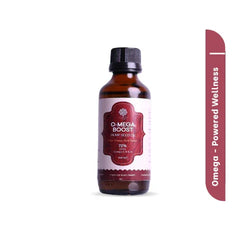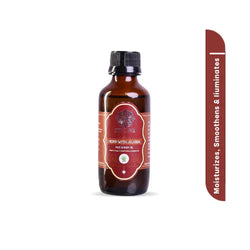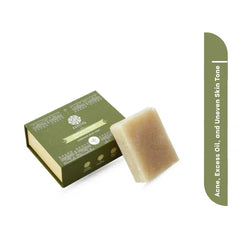“Only twenty five percent of the 800 tested sunscreens are effective at protecting your skin without the use of potentially harmful ingredients” said the sunscreen guide released by the Environmental Working Group some years back.
Research also says that almost 97% of Americans have sunscreen chemicals in their blood.
Quite baffling isn’t it? Even I was, when I did a web search for “safe sun screens”. Turns out that my idea of using a sunscreen to protect my skin isn’t that great after all!
Research across the globe points out that commercially produced sunscreens use chemicals that are toxic and harmful to our skin and body. But, many do not know this. Likewise many also do not know that there are various types of sun screens too. Sunscreens can be broadly categorized into Chemical Sunscreen, Mineral Sunscreen, and Natural Sunscreen. Let us look at them in detail
Chemical sunscreen: It is the most detrimental sunscreen available in the market. It contains many synthetic ingredients that are absorbed into the skin. Some of these ingredients are:
- Oxybenzone: It is a penetration enhancer. Which means that Oxybenzone helps other chemicals to be absorbed into the skin. It is a hormone-disrupting chemical and only blocks UVB rays. These are the good rays of the sun that help in Vita-D production. It has no effect on the harmful UVA rays of the sun.
- Octinoxate: It is one of the most harmful ingredients found in chemical sunscreens. This chemical gets absorbed by the skin and like Oxybenzone is a penetration enhancer. Though Octinoxate is supposed to prevent sun-induced aging, this one could actually be a culprit for premature aging. It produces frightening free radicals that can damage the skin and its cells.
Retinyl Palmitate (Vitamin A Palmitate): This is a combination of Retinol and Palmitic acid (an ingredient found in tropical plants). As an ingredient in sunscreens, it is supposed to improve the product’s performance against the aging effects of UV exposure. However, Retinyl Palmitate when exposed to the sun’s UV rays breaks down and produces free radicals that are toxic to cells, damage DNA and may lead to cancer.
- Homosalate: It is another UV absorbing ingredient used in sunscreens. It also acts as a penetration enhancer. However, once absorbed, homosalate accumulates in our body faster than we can get rid of it. It becomes toxic and affects our hormones.
- Octocrylene: This chemical when exposed to UV light, absorbs the rays and produces oxygen radicals that can damage cells and cause mutations. It is readily absorbed by our skin and may accumulate within our bodies.
- Paraben Preservatives: As the name suggests this chemical is used as a preservative. Use of this chemical has acute and chronc side effects. They mimic hormones and can disrupt the natural functioning of hormones found in our bodies. Parabens also increase the risk of breast and skin cancer.
- Synthetic fragrance: The chemicals used for these fragrances can cause a headache, nausea, dizziness, skin irritation and has also been associated with asthma.
To sum it up most of these ingredients affect our hormones and can cause cancer.
Mineral Sunscreens: Mineral sunscreens are considered a safer option. But yes, it has its own harmful effects. Some of the sunscreens contain the chemical ingredients listed above so, the risk persists.
Additionally, if a mineral sunscreen uses Nanoparticles like zinc or titanium oxide these can enter the body which is again unsafe. Zinc also has devastating effect on corals and environment.
Given that both Chemical and Mineral sunscreens have their disadvantages, is there an option or safe alternative? Yes, there are alternatives. One is to eat the right foods and healthy fats that support skin health. The best option is to use Natural Sunscreens.
What are natural sunscreens? These are made with natural ingredients that are safe for our skin. They include natural oils and butters to protect your skin.
One may want to try products from the Red Raspberry face cream from Satliva.
It is made of natural and organic ingredients which are beneficial in protecting us from the Sun. The ingredients used are:
Hemp seed oil: The hemp seed oil has a SPF rating of 6. It also deflects some of the UV rays without actually affecting the absorption of Vitamin D.
Red Raspberry Seed Oil: This oil is loaded with essential fatty acids that nourish your skin and an SPF of 28-50. (depends on the quality of the oil)
Geranium essential oil: This oil’s natural astringency helps to tighten the skin, regulate sebum and improve the look of pores.
Jojoba oil: It acts as a natural moisturizer for the skin and has a SPF rating of 4.
Carrot seed oil: This oil is said to have antiseptic properties, anti-aging properties, Vitamin C and E. It has an SPF of 38-40.
Tea tree oil: In a sunscreen tea tree oil is said to block the UV rays from penetrating the skin.
Mango Butter: This forms the base of the cream. Mango butter has Vitamin C which keeps your skin youthful and also beneficial for dry skin.
The cream from Satliva is a great product to be used. Why go back to the toxic commercial sunscreens? Shift to a healthier and safer option. Try one today!
Written by Namrata Kothari, Upward Media.




